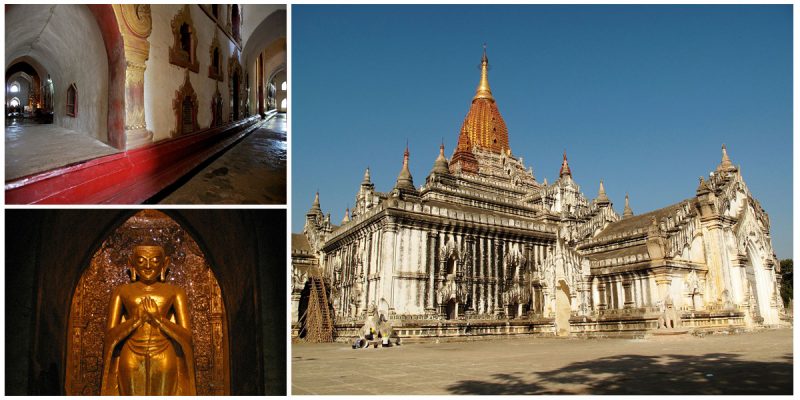The Buddhist temple Ananda is one of the four main temples remaining in Bagan, Myanmar. It was built in the Pagan Dynasty during the reign of King Kyanzittha in 1105 AD. The inspiration for the temple originated from the tales of Indian monks.
According to the legend, eight monks came to met King Kyanzittha and gave him a description of a temple in the Himalayas, the Nandamula Cave temple, where they meditated. With their psychic skills, they vividly explained to the king the landscape of where they lived. Amazed by their skills, the King requested the monks to build the temple in Bagan. After the construction had been completed, the monks were killed because King Kyanzittha wanted to retain the uniqueness of the temple and didn’t want them to build a similar temple anywhere else.
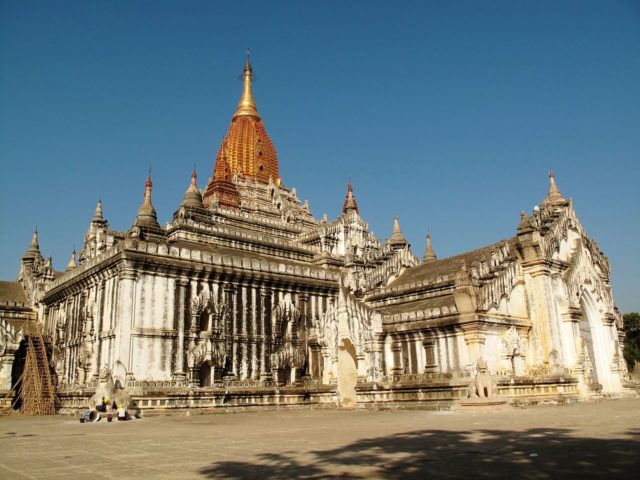
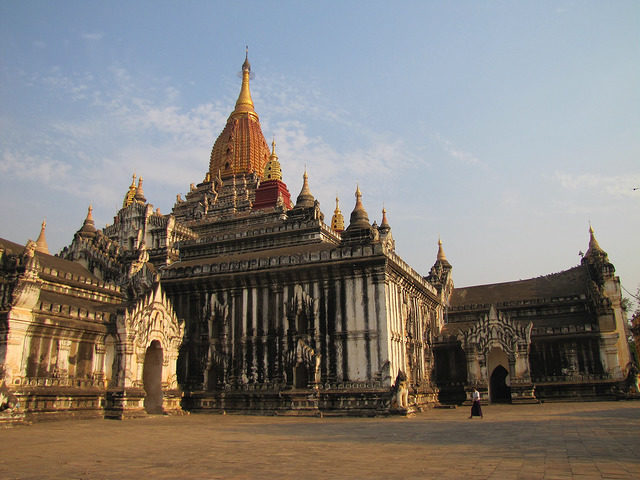
The architectural style shows Mon and North Indian influence. It is known as the largest and the best-preserved temple of Bagan.
The word “Ananda” translated from Sanskrit means “bliss” which is a popular Hindu and Buddhist name. The name of the temple comes from Venerable Ananda, Buddha’s first cousin, and a devout attendant. The layout of the temple is in a cruciform, and it has several terraces which lead to a small pagoda at the top.
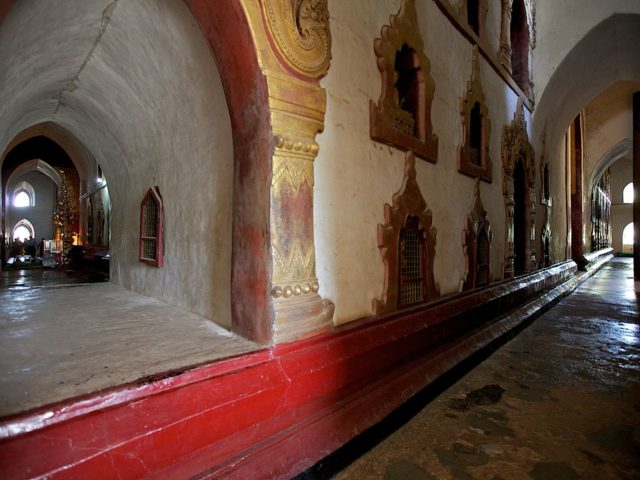
This small gilded sikhara is the most distinctive feature of the temple and is visible from miles away because of its reflection. At the center of the terraces is the core part of the temple built in the shape of a cube and is the most remarkable part because of its four 9.5 meters standing Buddha statues.
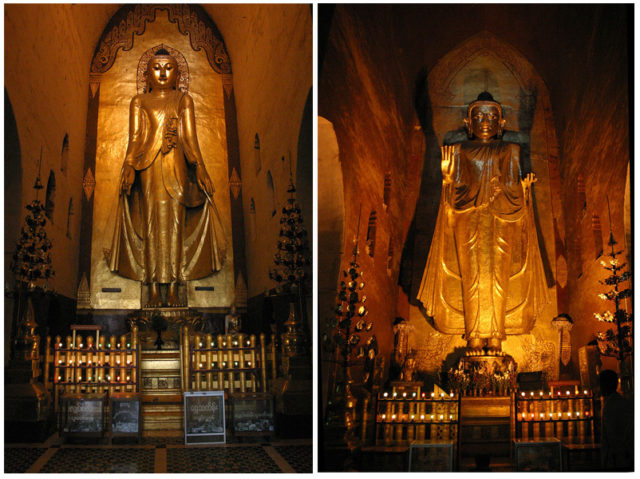
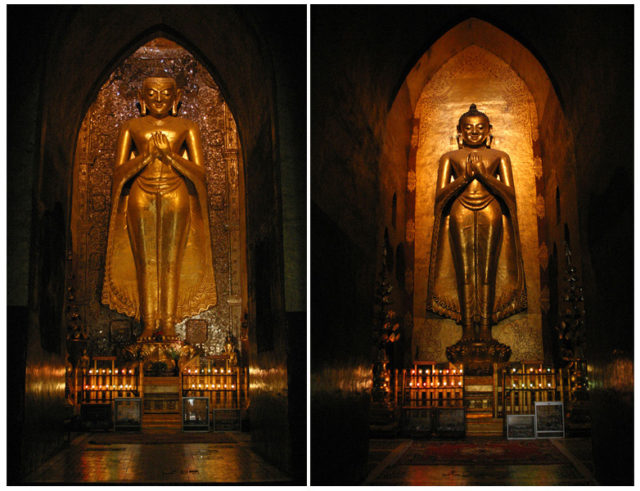
Each of the sculptures faces one of the 4 cardinal directions, and all of them are adorned with gold leaf. The sculptures facing north and south are said to be original, and the eastern and western sculptures were made later in the Mandalay style.
Within the precincts of the temple, there is a monastery called Ananda Oakkyaung built with red bricks. Built in 1137 AD, the walls of the monastery are filled with paintings of the 18th century and the monastery is best known as the home of a well-known monk, Shin Thuddhamma Linkara, who lived there.
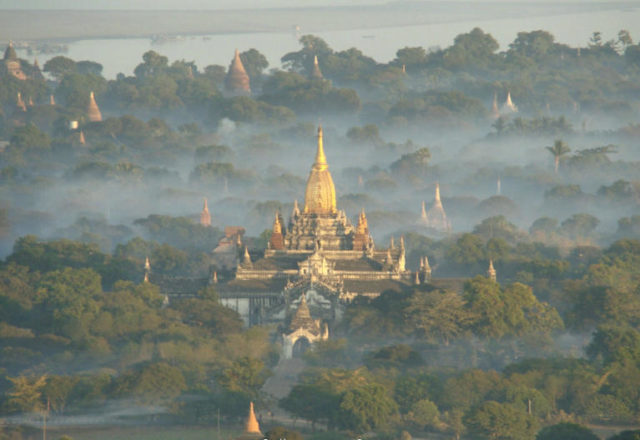
The temple is located to the southeast of the only surviving gate of the ancient Bagan city, the Tharabha Gate, which dates back to 849 AD. Today, there is a museum near the temple for the purpose of studying the artifacts of the temple.
We have another story for you: Tungnath temple: the highest Shiva temple in the world
The best time to learn about the local people and their traditions is during the festival period. The festival is held during December to January, where there are 1000 monks who chant from the scriptures for 72 hours.
